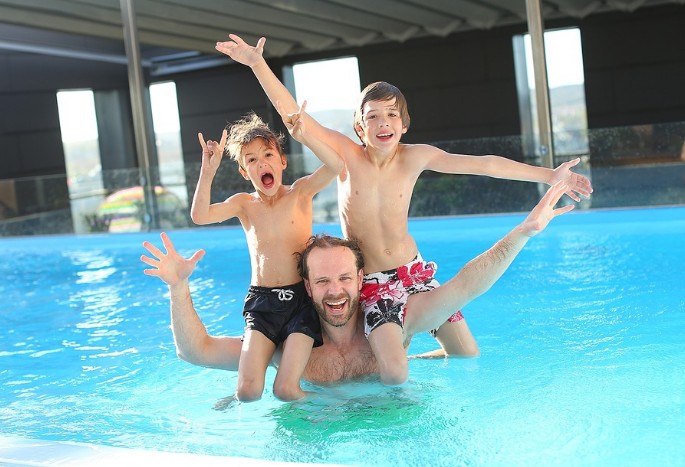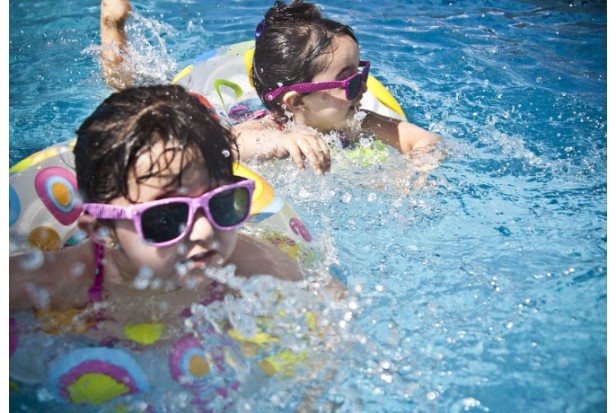Can You Run Pool Pump While Swimming – Ultimate Guide 2022
I’ll answer any additional queries you might have about pool pumps and when to run them in this article, as well as the concept of Running Pool Pump. Make sure to read all the way through for a better understanding.
You’ve come to the right place if you have a pool pump but are unsure of how or when to use it. Both new and seasoned swimmers in the pool occasionally ponder whether they should use the pump. It takes some time to fully comprehend everything because there are various parts with various functions.
What is a Pool Pump
A pool system’s main and most crucial component is the pool pump. It can be used for a variety of things, such as water filtration and circulation. Cleaning the pool of waste, dirt, and debris is one of its main responsibilities.
Algae, weeds, leaves, and dirt can all be physically removed from the pool by the pump. In addition, you can add cleaning agents so the pump can filter out bacteria and smaller dirt particles.
How to Use a Pool Pump
The pool pump chamber is typically situated nearby the filter or close by. Make sure there is enough water before starting the pump.
The water shouldn’t be any lower than skimmers. Additionally, you could add water directly to the pump.
Once there is enough water, inspect the valves in the pump’s chamber. In the event that they are shut, open the discharge and intake valves. The pool pump can then be activated after that.
Working Mechanism of a Pool Pump
Water can enter pool pumps through an inlet, and it can exit through an outlet. The water is drawn through the inlet when the pump is running, and the filtered water is removed at the outlet. Water can flow properly thanks to the inlet and outlet.
The motor drives the impeller to spin the volute system when it is turned on. Water flows more quickly as a result of this. The water filter cleans the water as it passes through at a rapid rate. I’ll talk about filtration later.
A connection exists between the motor’s shaft and the impeller. The shaft rotates when electricity is supplied, which causes the impeller to also rotate. Water drawing is the impeller’s main job.
Additionally, the pump has end shields for supporting the bearings. The bearing’s job is to make sure the pump shaft can freely rotate. Alternating current is delivered to the motor’s shaft through windings.
Best Time to Run Pool Pump
So, if you don’t need to run the pump while swimming, when should you do it? Due to the pump’s high electricity usage, you might be hesitant to leave it running constantly. However, it is essential if you frequently use your pool.
If you swim daily or frequently throughout the week, start the pool pump several times a day. Five to eight hours per day should be allotted for running.
Try running it at night if you want to reduce your monthly bill. Normal off-peak electrical times are from after 10 p.m. until 6 a.m. the following day.

Other Important Parts of a Pool Pump
A pool pump also needs other crucial components in addition to the motor. The following are some of them.
Impeller
Part of the motor that moves is the impeller. The water is moving quickly as a result. Closed face impellers are used in modern pool pumps. They are the most effective in terms of energy usage and flow rate.
Pump Basket
At the end are attached pump baskets. To prevent damage to the impeller, this gathers large debris or other materials. It is important to distinguish the filter from the pump basket. Both of these exist in their own right.
Pump Strainer and Housing
Water cannot enter the pump housing thanks to the cover over the strainer. A pump needs to release air in order to prime. As the impeller rotates, this is accomplished from the housing.
Pump Seal
The mechanical seal used on pumps is made of ceramic and graphite. This device stops water from the pump from leaking out. The seal must be kept cool and properly aligned. Do not forget that the seal should never be lubricated.
Functions of a Pool Pump
A pool pump is primarily used to keep the water in your pool clean. In order to purify the water and control its flow, it is pumped through the filter. By doing this, you can clean your pool of algae, dirt, hair, and bacteria and replace it with fresh water.
The pump also enables the circulation of chemicals in your pool. Chlorine-based chemicals are essential for disinfecting and maintaining the cleanliness of your pool. New chemicals are added to make up for used ones as the water flows.
A waterfall and bubbling feature can be found in some pools. The pool pump will be put to heavy use with these. If your pool has a heater, the pump can continuously reheat the water.
The amount of time per day that the water in your pool needs to be turned over depends on the size of your pool. This is referred to as the turnover rate. You can do this with ease if you have a good pump. This is necessary for effective chemical mixing and water filtration.
Do You Need To Run The Pool Pump While Swimming?
This is a question that many pool owners repeatedly ask themselves. The pool pump can be operated while swimming, then, is the answer. It is not particularly necessary to do this, though. Use of the pump is optional; however, you are free to do so.
To filter out debris and maintain clean water while you are in the pool, use the pump while swimming. This is something you can choose to do if you practice good hygiene.
It is a good idea to keep the pump on if there are lots of people using your pool or if you use it frequently. This is due to the possibility of numerous undesirable germs and bacteria causing health issues. The more chemicals there are, the lower the risks will be, so keep the pump running.
Some swimmers elect to use their pump to create a bubbling or waterfall effect. Before you do that, it is best to consider the cost of electricity.
Last Words
It’s important to consider your pump’s power requirements even though you can continue to use it while swimming. Pumps consume a lot of energy, so the more you use one, the more your electricity bill will cost.
There are no limitations on when you can use your pump aside from this. I hope this article has helped to clarify things.
FAQs
When Should You Run Your Pool Pump
On average, you should run your pool pump around 6-8 hours per day during winter and 10-12 hours per day during summer. Because algae grows more quickly in warm temperatures, you should be aware that you need to run your pool pump longer in the summer.
Can I Run Bestway Pump While Swimming
It is safe to swim while the pool pump is running and, in fact, having the filter working while swimming is actually the best option.
How Long Can a Pool Go Without a Pump
A pool can only go a short time without a pump, perhaps up to a week, and still be safe to swim in provided you keep the chlorine and other levels up. The temperature, the weather, the condition of the pool when the pump stopped, and other factors will all affect how long it takes.
Best Time to Run Pool Pump in Summer
The best time to run your pool pump is during the warmest hour of the day; however, keep in mind that this means you will have higher energy consumption, which may lead to an increase in your electric bill. Run your pool pump at night to avoid peak hours if you want to reduce your energy costs.
Can You Swim in An above Ground Pool With the Pump Running
It is safe to swim while the pool pump is running and, in fact, having the filter working while swimming is actually the best option.
Can a Pool Pump Electrocute You
A pool pump electrocution can cause serious injury and even death. It happens when swimmers come into contact with electrical current that has leaked into the water as a result of faulty wiring or broken machinery.
